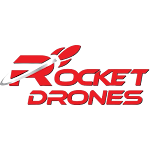Introducing
drone racing for schools is more than just bringing in new technology;
it’s a way to improve learning across many subjects. From math and science to
computer studies and physical education, drone racing provides a fun and
exciting way for students to apply what they learn in class. This hands-on
method not only makes learning more enjoyable but also helps prepare students
for future jobs by showing them how technology works in different areas. They
also become more comfortable using advanced technologies, laying a strong
groundwork for further learning in STEM subjects. Overall, this diverse
learning experience encourages creativity and innovation among young people. In
this article, you will learn how drone racing in school environments can
empower the educational quality of students.
Mathematics:
Calculating Flight Paths
In
math classes, drone racing can help teach geometry, algebra, and calculus by
having students calculate flight paths and angles. They use formulas and
equations to make their drones faster and more efficient, allowing them to see
math concepts in action. This hands-on approach makes complicated ideas easier
to understand and more interesting for students.
Physics:
Understanding Aerodynamics
Physics
lessons become exciting with drone racing as students learn about aerodynamics,
energy, and motion. Through the drone
STEM curriculum, they can try out different forces that impact
how drones fly, like lift, thrust, and drag. This hands-on experience helps
them see how the laws of physics work in real life. As a result, they better
understand and remember important physics concepts.
Technology:
Programming and Robotics
Integrating
drone racing offers a great way to teach computer science and technology.
Students get hands-on experience with programming and setting up drone STEM kits,
which helps them learn coding and robotics. This experience not only improves
their technical skills but also encourages them to think critically and solve
problems, which are essential parts of being good with technology.
Physical
Education: Enhancing Coordination and Strategy
Drone
racing has a unique role in physical education because it helps improve motor
skills, hand-eye coordination, and strategic thinking. Flying a drone requires
careful control and quick reactions, much like traditional sports. However, it
also involves planning and making smart decisions, giving students both mental
and physical challenges.
Art:
Fostering Creativity and Design
Drone
racing also creates fun opportunities in art classes by promoting creativity
and design. Students can personalize their drones by choosing colors, patterns,
and unique shapes. This creative process lets them mix technical skills with
artistic expression, making learning more enjoyable. By designing attractive
drones, students learn about design principles and see how art relates to
technology, helping them develop a well-rounded education that encourages both
innovation and creativity.
Overview
Overall, bringing drone curriculum into educational institutes improves the learning experience by combining different subjects, boosting skills, and encouraging creativity. This exciting method helps prepare students for future technology and STEM challenges while making learning fun. By participating in drone racing, students gain essential skills that will help them in their studies and future careers. If you also want to conduct drone racing in school, then you can reach out to businesses like Rocket Drones. Their drones are easy to handle and operate. Furthermore, with the latest and advanced features, these experts teach every subject in detail.



